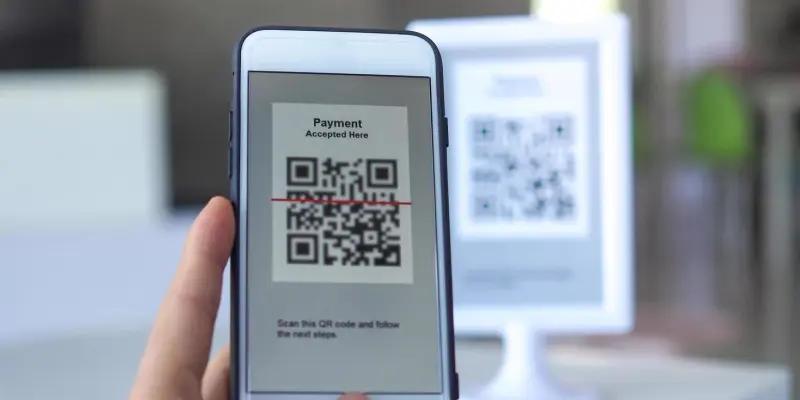The digital payment landscape in the Asia Pacific (APAC) region is undergoing a significant transformation, driven by the increasing adoption of QR code payments. A study by Juniper Research has forecasted that the value of QR code payments will see a dramatic rise of 300% by 2029, reaching an impressive $1.2 trillion, up from $290 billion this year. This remarkable growth rate is far superior to what is expected in regions such as Europe and North America.
Digital Transition in Key APAC Markets
The Rise of QR Code Payments in Southeast Asia
Several countries within the APAC region, including Vietnam, Indonesia, and the Philippines, stand out as key drivers of this rapid adoption of QR code payments. These nations are making a significant shift from traditional cash transactions to modern digital payment methods. The increased use of digital payments is anticipated to substantially reduce the dependence on cash within these economies. QR code payments are gaining traction due to their simplicity and affordability. Users only require a smartphone or a scanning terminal to make transactions, making this technology accessible to a broader audience without the need for expensive infrastructure.
In contrast, Near Field Communication (NFC) technology, which is commonly seen in developed markets, faces several hurdles in Southeast Asia. The high costs associated with establishing NFC infrastructure and the relatively low penetration of card usage in this region are major obstacles that hinder its widespread adoption. Therefore, QR codes have emerged as a cost-effective alternative that aligns well with the financial ecosystem of these countries, offering a pragmatic solution to promote digital financial inclusion.
The Shift from Cash to Digital Wallets
The proliferation of QR code payments in the APAC region is closely linked to the growing popularity of digital wallets and account-to-account (A2A) payments. Digital wallets have lowered the barriers to entry for digital payments, ensuring that even those without traditional banking access can engage in cashless transactions. This democratization of financial services is a critical factor contributing to the rapid growth of QR code payments. Furthermore, the ease of integrating QR codes with digital wallets has facilitated seamless transactions for consumers and merchants alike, encouraging broader acceptance. This trend toward the adoption of digital wallets and QR code payments signifies a pivotal shift in consumer behavior, where convenience and efficiency are paramount. As more consumers embrace the convenience of digital wallets, the reliance on cash continues to decline. The flexibility offered by QR code payments, combined with the simplicity of digital wallet integration, makes this payment method particularly attractive in an increasingly digital world.
Challenges and Opportunities for QR Code Payments
Need for Interoperability and Standardization
Despite the promising growth trajectory, the expansion of QR code payments in the APAC region faces several challenges, with interoperability being one of the most pressing issues. Unlike payment card systems that operate on universal standards, QR code payments lack standardized interoperability. This poses a significant hurdle for the widespread adoption and scalability of QR code payments across different digital wallet providers. To overcome this challenge, it is essential for local digital wallet companies to collaborate on defining and adhering to common standards. One notable initiative aiming to address this challenge is Alipay+, which seeks to enhance the interoperability of wallet-based payments. While efforts like these represent commendable progress, the study by Juniper Research suggests that additional measures are required to achieve seamless interoperability on a broader scale. Robust collaboration among digital wallet providers and adherence to common standards will be crucial in unlocking the full potential of QR code payments in the region.
Regulatory Alignment and Future Prospects
Regulatory alignment is another critical aspect that requires attention to ensure the successful proliferation of QR code payments in the APAC region. Regulators are likely to continue mandating interoperable QR code payments to facilitate a cohesive and efficient payments ecosystem. However, achieving effective regional regulatory alignment remains a complex task. Collaboration among regulatory bodies across different countries will be essential to address the challenges associated with interoperability and standardization effectively. Looking ahead, the future of QR code payments in the APAC region appears promising. As countries within the region continue to embrace digital payment methods, the value of QR code payments is poised to reach unprecedented heights. The combination of affordable technology, regulatory support, and collaborative efforts on standardization will be key drivers in realizing the full potential of QR code payments. With sustained innovation and cooperation, QR code payments are set to become an integral part of the region’s financial landscape.
Strategic Insights: Embracing Digital Transformation
The digital payment landscape in the Asia Pacific (APAC) region is experiencing a significant transformation fueled by the growing use of QR code payments. According to a Juniper Research study, the value of QR code payments is projected to surge by an astounding 300% by 2029. This means it will leap from the current $290 billion to an astonishing $1.2 trillion in just under a decade. This incredible growth rate outpaces what is expected in other parts of the world, such as Europe and North America. This trend can be attributed to several factors, including the region’s increasing smartphone penetration, widespread internet access, and the consumer preference for convenient and contactless payment solutions. Governments and financial institutions in APAC are also supporting this shift by promoting digital payments and implementing favorable policies. As a result, businesses and consumers alike are embracing QR code payments, further accelerating this upward trajectory. This paradigm shift in the APAC region’s payment ecosystem signifies a broader global trend towards digital financial transactions.

